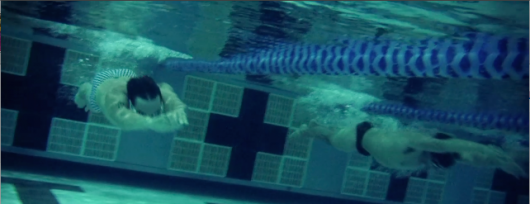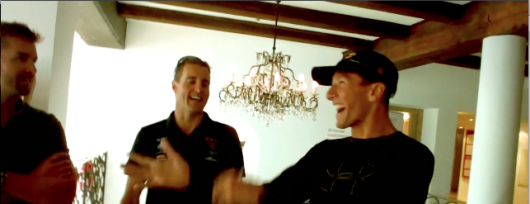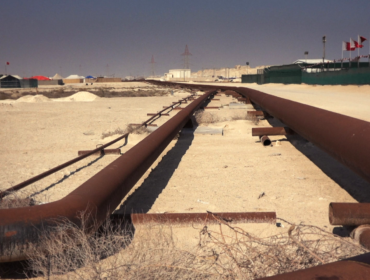Periods of rest are highly active phases for body build-up
You probably urge yourself as often as your coach does to take a rest? You can hardly stand the breaks and tend to carry on training again much too early, and you have a bad conscience when you are not training?
How are we supposed to judge our needs of the own period of recovery in a reliable way? Or put it another way: which criteria should you choose in order to make the decision to take a rest both rationally and with a good conscience? Even though science has tried to define parameters or body conditions such as heavy legs syndrome or heart rate the decision to get on is in the end primarily made by feel.
The body is not an entity following linear-causal rules
Newton’s mechanical metaphor of “action equals reaction” can hardly be transferred to our organism. On the contrary, it comprises many interacting positively (activating) and negatively (suppressing) coupled regulatory circuits, which maintain the dynamic balance necessary to survive. Even today we still know too little about which parameters must concord among athletes’ selected for a study in order to collect data that is comparable and the results reliable in away that they can be generalized and thus transferred back to other individuals who have not been enrolled in the study.
Due to the above mentioned issues recovery is such a tricky field of research, the area is crowded with mantraps. But now let’s leave the territory of methodical criticism and highlight something of what we do know.
Healing processes demand periods of recovery
It is common knowledge that endurance strains always go hand in hand with micro-injuries in muscles, sinews, connective tissue and smallest blood vessels. These tiny injuries are required in order for the muscle to adapt to a higher performance level. The injuries can affect only muscle membranes, certain fibers or the whole fiber bundle. This makes the difference in the levels of muscle pain that you suffer from after training. Fiber ruptures also develop in the sinews and the connective tissue. Smallest vessels can tear.
The reasons for these micro-injuries are not only due to mechanical forces but are also due to rising- and falling temperature in the tissue, disturbed blood flow, shifting of the pH, flooding with free oxygen radicals and/or missing energy supply can influence the extent of the inevitable muscle injury.
The results of all these influences are injuries that can be so tiny that the athlete does not even notice them or so bad that long lasting muscle pains arise. Creatinkinases and myoglobine levels above normal are typical in such cases.
All these injuries induce inflammatory processes in the body regardless of where they may be located. Inflammations are always and without exceptions the response of the body to injuries. The initiated inflammatory processes are the foundation for all healing and adaptation processes such as the final training effect.
Immune system is steering the inflammatory and subsequently the healing processes
The immune system steps into the scene as a system that initiates, propagates, controls, and coordinates the inflammation and brings forth healing. Immune cells migrate into the muscle. Soluble messenger molecules such as cytokines are released by muscle cells and immune cells and orchestrate the inflammatory processes. Start and stop signals both are generated by the immune system and control the process in the direction of healing. An intact immune system can heal micro-injuries within 3 to 5 days.
If micro-injuries do not heal well, due to a weakened immune system – this may be for example because of an insufficient time of recuperating – then muscle ruptures and injuries to the sinews may be the result. And by the way, any form of inflammation pays its toll, be it an injury or an infection, by consuming energy and consequently leading to a performance drop.
Due to the fact that never all muscle fibers are activated at once – studies speak of a maximum of 50% in competitive athletes – the muscle can tolerate an overload for quite a long time. Different fibers are activated by a kind of rotary principle. The pattern of active fibers even changes during one and the same training cycle. Parts of the muscle can find time to recuperate even if the muscle is not given the proper recovery time.
Efficient build-up processes require periods of recovery
Training and racing are situations in which degradation processes prevail: Carbohydrate and fat stores are used and if absolutely necessary even proteins are transformed into glucose. The metabolism becomes consumptive (catabolic), the cortisone and catecholamines levels in the blood increase and the anti-inflammatory components in the immune system are activated.
Recovery is dominated by build-up processes. The metabolism becomes anabolic. Now energy is used and needed for protein synthesis, and the adaptation of the muscles to achieve a higher level of performance can begin. Muscle build-up only happens during recovery and is the actual goal of the exercise. Sex hormones, insulin and growth hormones are strong build-up hormones (anabolica).
Conditions within the cells change as well. The inflammatory stimuli are joined by a metabolic stimuli that is kicked of by growth factors (IGF-1) and cytokines. Cells and environment are both highly active and protein synthesis runs on full speed, but only if you allow them to work while giving you some rest. This sounds like a paradox: you may have a bad conscience not training, but your body is not lazy, it is working hard.
About the importance of mechanical stimuli and how they get translated
The mechanical impulses by movements you give the body with training are an essential and integral part of the muscle adaptation process. The mechanical stimulus is transformed into a biochemical stimulus. Sinews, connective tissue, muscles and cells must harmonize perfectly to make this amazing translatory performance possible. If this is the case, then the muscle cells and their milieu receive the correct signal patterns that are needed for build-up, transformation and multiplication.
Skeletal muscles, sinews and the connective tissue surrounding the muscles and the sinews, form a living entity, which underlies a constant protein build-up and degradation.
Muscles and connective tissue adapt their form and structure to raising demands
Muscle fibers multiply and grow thicker, connective tissue fibers increase, mesh more effectively and become stronger. The number of mitochondria in the muscle cells increases. Buffering systems for protection against free radicals raise their capacity. The vessels also grow. A fine but tight net of blood vessels crosses the healthy muscle. It guaranties an optimal oxygen-and energy supply because of its enormous ability to dynamically adapt the blood flow in the muscle.
All the mentioned processes lead to an increase of your performance and are the well deserved result of training, if you can manage an optimal change between work-out and recovery. You experience increasing muscle strength, speed and endurance as well as optimized energy utilization.
My personal comment and plea for biestmilch
In a condition of inflammation Biestmilch works as an anti-inflammatory and the growth factors it contains influence the cells’ regeneration. Cell lesions are manifold after intensive training sessions and races. These factors foster e.g. muscle growth, and repair of a disrupted mucosal lining of all outer surfaces be it the gut, the bronchi, or the stomach etc.





